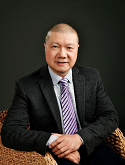| 个人简介 | |
|---|---|
 Dr. Kai Wang ShiBei Hospital Shanghai, China |
|
| 标题: Research on Temporal Bone Puncture with 3D Guidance | |
| 摘要: Purpose: Based on the inherent structure of the skull with its fixed anatomical position, this study aims to explore the application of 3D guide plates in temporal bone puncture surgeries, providing a feasible approach for minimally invasive treatment of the cochlea and local drug intervention. Methods: CT scans of goat skulls were performed and Dicom data were imported into the mimics software for reconstruction to obtain a 3D model of the relative position of the cochlear base and the tympanic membrane. Using reverse engineering, the temporal bone structure was reconstructed in 3D, and a puncture line was designed on the surface of the ear back, avoiding important structures and blood vessels, and reaching the cochlear base and tympanic membrane. A fixed puncture guide plate was designed on the surface of the temporal bone, which includes a reverse fixed guide tube pointing outside the temporal bone and a puncture guide tube pointing inside the temporal bone. Accurate puncture was performed through the puncture guide tube into the temporal bone, and the puncture position was verified by CT scan. Results: The puncture guide tube penetrated into the temporal bone without damaging important structures and blood vessels, and accurately guided a 1mm drill bit to penetrate 2mm into the cochlear base and tympanic membrane with a deviation of less than 0.1mm. Discussion: Temporal bone puncture provides the possibility of inner ear endoscopic surgery, and the 3D guide plate is a key component. The metal temporal bone puncture guide plate has good stability and is conducive to CT scan verification of experimental results, but the puncture guide tube is prone to blockage and requires deviation. The resin material's 3D temporal bone puncture guide plate has acceptable stability, but is still far from clinical application. This study is expected to provide a feasible approach for minimally invasive treatment of the cochlea and local drug intervention of cochlear blood supply and nerve, as well as vestibular blood supply and nerve.
Keywords: temporal bone puncture; 3D reconstruction; puncture template; inner ear puncture
| |
| 简介: Wang Kai, male, born on December 14, 1968, registered in Shanghai. In July 1992, he graduated from the Clinical Medical Department of Xinxiang Medical College with a Bachelor's degree. In 2005, he obtained a Master's degree in Clinical Medicine from Zhengzhou University. In September 2006, he enrolled in the First Clinical College of Zhengzhou University and obtained a Doctorate in Medicine under the supervision of Dong Mingmin and Zhao Yulin. Previous positions: Deputy Director of the Otolaryngology Department of the Second People's Hospital of Xinxiang City, Deputy Dean of Zhangjiagang Chaoyang Otolaryngology Hospital, Director of Otolaryngology Department, Director of Otolaryngology Department of Shanghai Quyang Hospital, and Director of Otolaryngology Department of Shanghai Jing'an District Zhabei Central Hospital. Current position: Director of Otolaryngology Department of Jing'an District North Hospital, Leader of Otolaryngology, Head and Neck Medical Group of Jing'an District Medical Association. Otolaryngology Medical Appraiser for Jing'an District, Changning District, and Qingpu District. Professional title: Associate Chief Physician of Otolaryngology. Other positions: Member of the Dizziness Disease Group of the Chinese Association of Integrated Traditional Chinese and Western Medicine; Member of the Chinese Medical Association; Member of the Otolaryngology Group of the Chinese Medical Association of Traditional Chinese and Western Medicine; Executive Director of the Precise and Digital Medicine Branch of the Chinese Association of Plastic and Aesthetic Medicine; Member of the Anti-Aging Branch of the China Geriatrics and Gerontology Society; Former Supervisor of the Xinxiang Consumer Association. Joined the Sino-American Alumni Association in 2021. In June-July 2009, he studied Maxillofacial Implants at Sahlgrenska Hospital in Sweden, and from September to November 2019, he worked in the Otolaryngology Department of Mayo Clinic in the United States. Familiar with international medical standards and processes, with channels for international clinical medical technology docking. In April 2023, he obtained a Private Pilot License. | |
